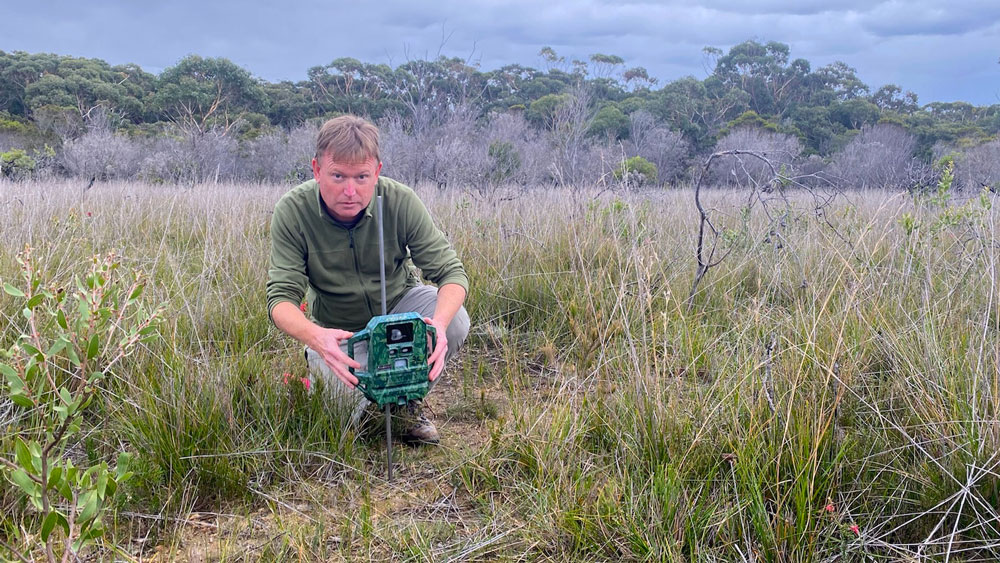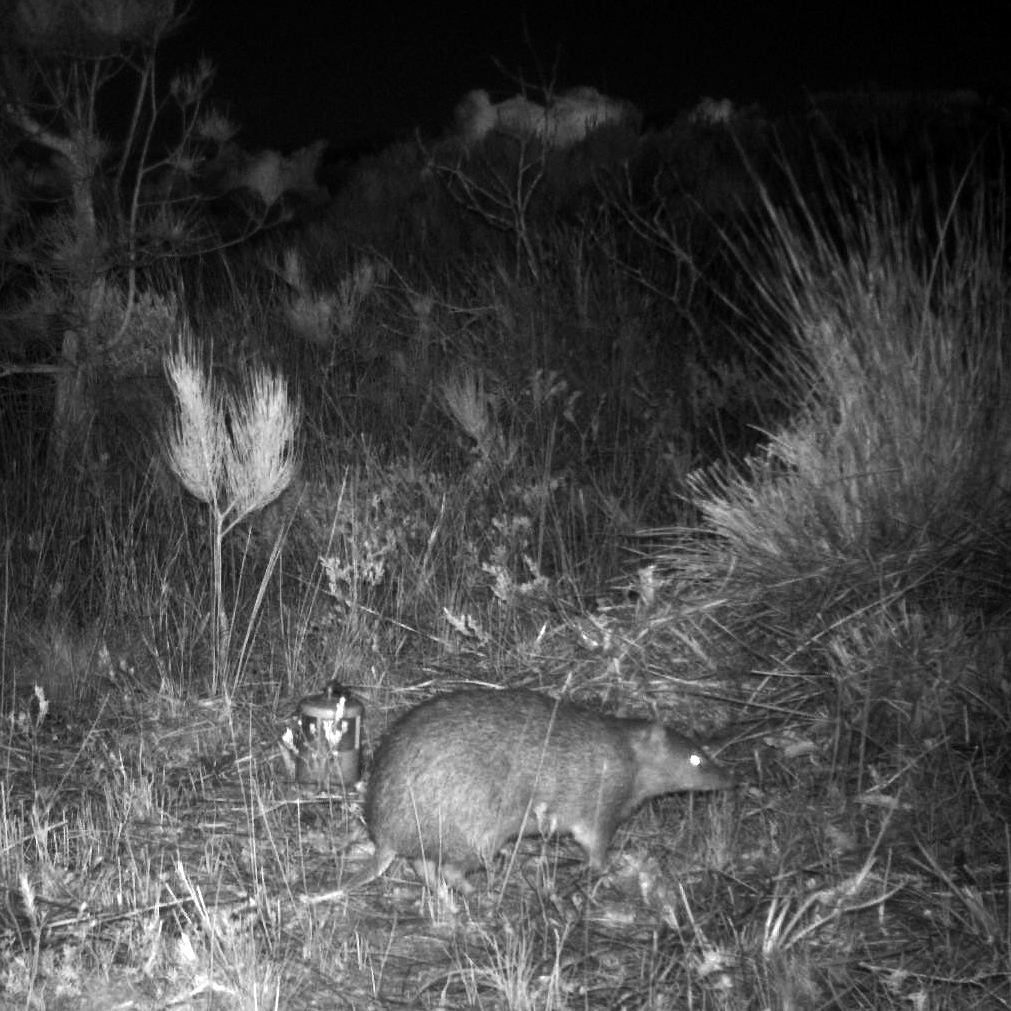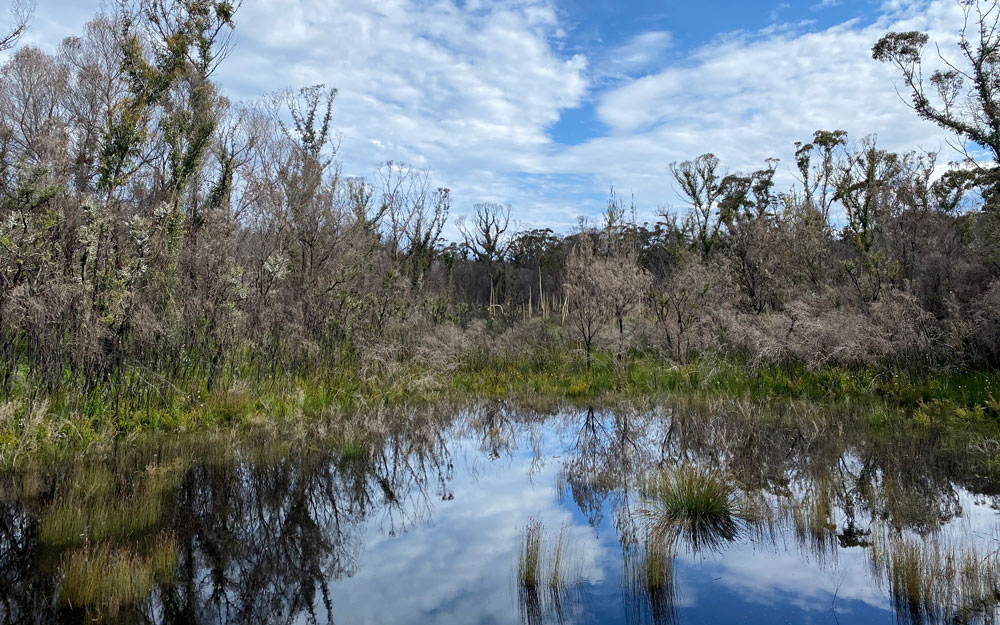
In a tale of recovery and rebirth, researchers have seen endangered bandicoots rebound in areas of southern NSW which were devastated by the 2019-20 bushfires.
NSW Department of Primary Industries (DPI) senior research scientist, Andrew Claridge, said the southern brown bandicoot in Ben Boyd National Park, where effective fox control has been ongoing, was detected at an all-time high in 2021.
“While the immediate impact of bushfire was extreme, monitoring work conducted in the Eden region by NSW DPI in partnership with NSW National Parks and Wildlife Service (NPWS) highlight that post-fire recovery has been quick for some species,” Dr Claridge said.
“Proactive management of pest species, including foxes and feral cats, has provided an edge which has allowed native animals to better recover after bushfire.”
 “Just one to two years after extreme bushfire, some native fauna have returned at close to, and in some cases exceeding, levels prior to the fires.
“Just one to two years after extreme bushfire, some native fauna have returned at close to, and in some cases exceeding, levels prior to the fires.
“Southern brown bandicoots were detected at close to 50 per cent of monitoring sites and long-nosed bandicoots were recorded at more than 40 per cent of the sites, on par with numbers in the past decade.”
Other species, which have been slower to recover but are still heading in a positive trajectory, include the long-nosed potoroo, detected at around 25 per cent of monitoring sites – double the rate of the year immediately after wildfire.
Since 2012, NSW DPI and NPWS have jointly monitored native fauna in Ben Boyd National Park and Nadgee Nature Reserve, with an emphasis on threatened ground-dwelling mammals, including the long-nosed potoroo and southern brown bandicoot.
These mammals are a relic of a once widespread group of fauna. Their regional and national importance is recognised in the NSW Biodiversity Conservation Act 2016 and Australian Environment Protection and Biodiversity Conservation Act 1999.
The long-nosed potoroo and southern brown bandicoot are critical components of the forest, woodland and heathland ecosystems they inhabit, playing essential roles in soil and nutrient turnover and the dispersal of beneficial symbiotic fungi.
Monitoring, using systematic camera trapping, also showed that intensive fox control has greatly reduced numbers of this introduced predator, which is known to impact heavily on many native species.
 From 2012 to 2019, monitoring indicated fox activity was very low due to control activities, allowing the potoroo and bandicoot to persist and do well. Southern brown bandicoots now occur at more sites than they were previously ever reported.
From 2012 to 2019, monitoring indicated fox activity was very low due to control activities, allowing the potoroo and bandicoot to persist and do well. Southern brown bandicoots now occur at more sites than they were previously ever reported.
Post-fire, much of the available cover for fauna – understorey vegetation including heath, ferns and sedges – was destroyed.
Despite early concerns that there may be long-lasting negative impacts, ongoing monitoring has demonstrated clearly that native fauna has been resilient to fires, particularly where the long-term fox control has been undertaken.
Background:The most recent reported monitoring is from winter 2021. Ongoing monitoring continues to record native fauna and predator presence and the latest numbers will be reported for winter 2022.








